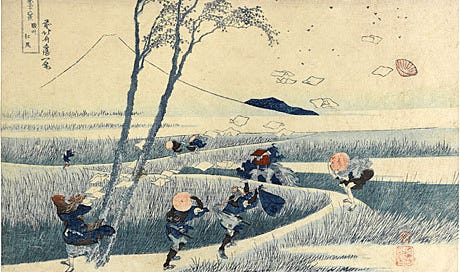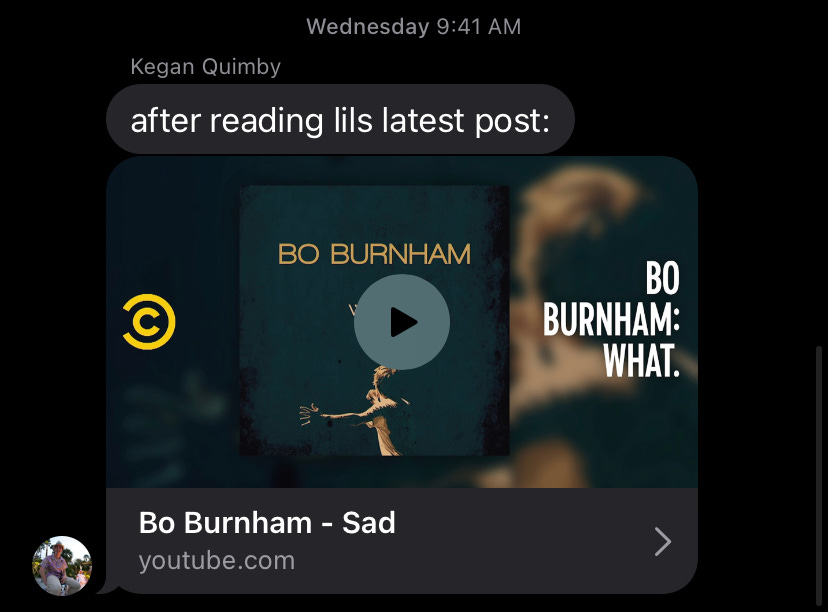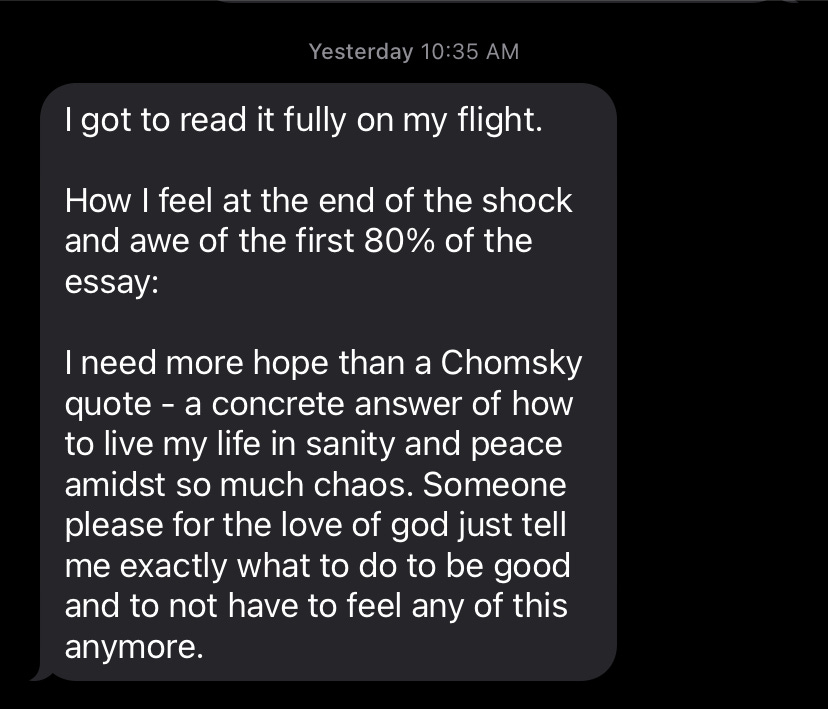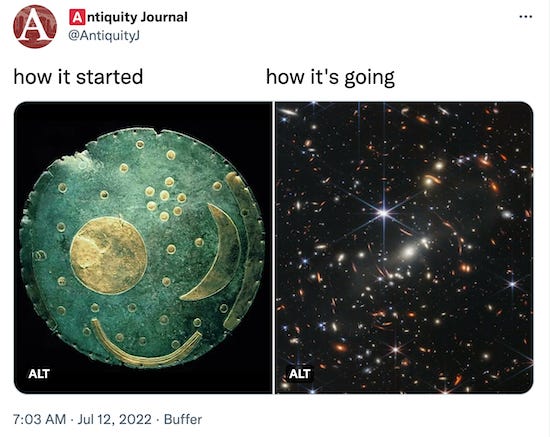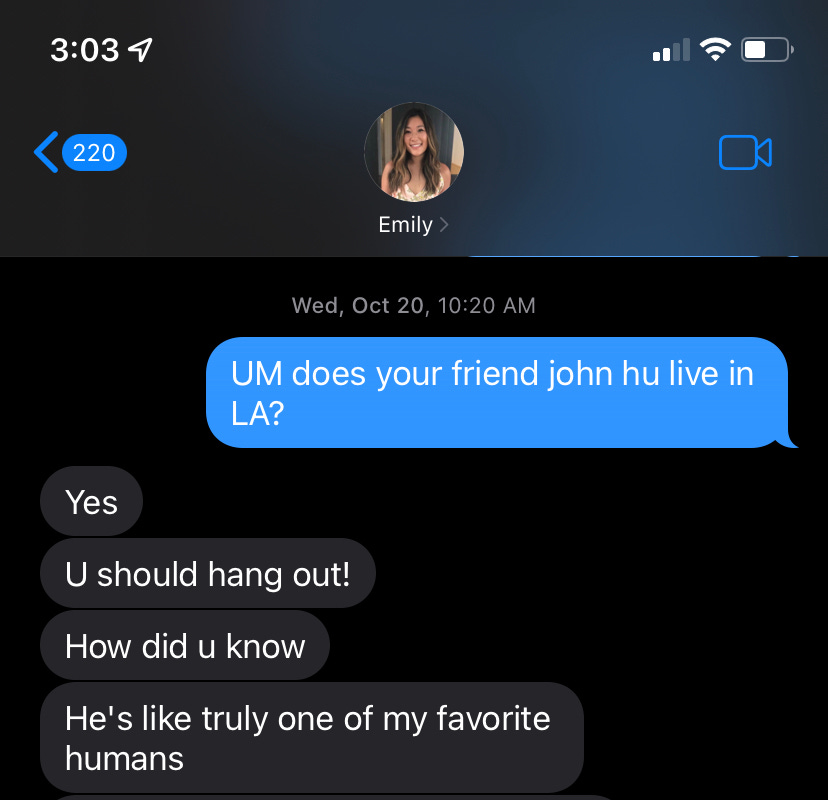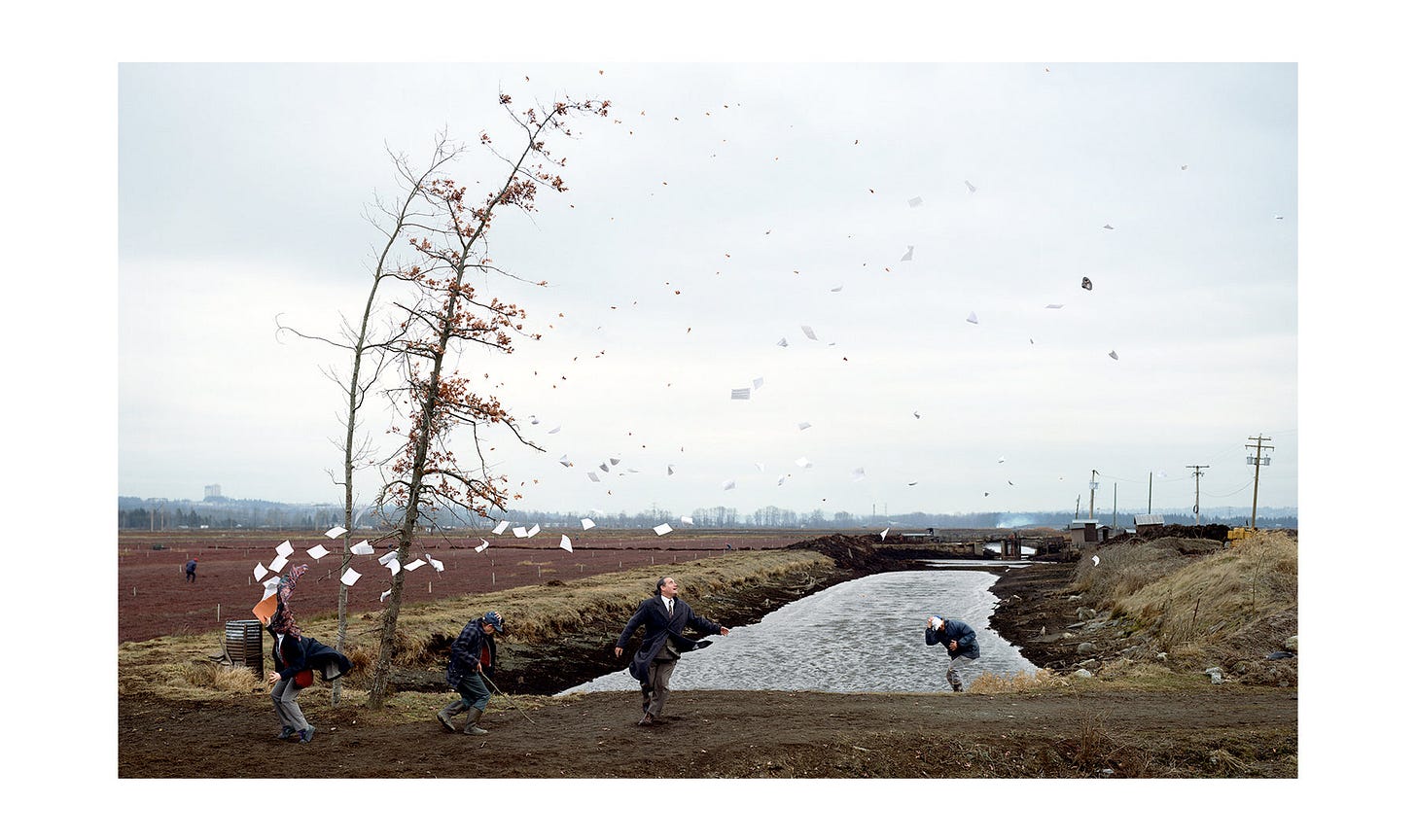letters to the editor
letter from the editor
After receiving reader letters (hehe) like the above throughout last week, I started thinking about coping—how much of life—this life, my life—is coping; what enables me to move through the day-to-day; whether I’m making choices, like the rest of us, to the future detriment of myself and others—
A fast fashion dress purchase might seem like a reasonable way to dress nicely, cheaply, yet the person who sewed it across the globe is poorly paid and treated, and most of the overproduction of these companies ends up polluting other poorer nations. Demand for one kind of banana, a convenient and cheap supermarket snack, pollutes growing nations and pesticides poison farmworkers. One person in the United States’ easy pleasures are another person’s and ecosystem’s burden. […] When does a cheap dress or cheap food become worth more than the continued existence of the planet? When will normality shift to encompass the well-being of everyone?
When we say that changes only have to occur on the level of big policy and systems, we leave out the significance of public participation and the fact that how we each live our lives is part of a greater whole.
We live in a world that has given us default answers to every question that arises within us. It has become paralyzing to try to live outside of autopilot; so we move, one foot in the other, in the same direction as before. As the dissenting opinion in Dobbs stated, “closing our eyes to the suffering today’s decision will impose will not make that suffering disappear,” and yet, the truth is, my primary coping mechanism is averting my eyes.
awe as a coping mechanism
With my ever-present cynicism, I encountered Brené Brown’s Daring Greatly in yoga teacher training. Brown talks about the antidote to a fear-driven life, including the tried-and-true Gratitude Salve™️, which, she asserts, will allow us to experience the joy, stagnant but at-the-ready, in the every day.
And truly, despite the bright chaos and a darkening sense of foreboding, there have been many joyful things in my life that earnestly hint that all might not lost, that hope still lives on the edges. But while gratitude, joy, and hope are worth seeking in and of themselves, I’ve realized that the phenomenon that I treasure above all is the sense of awe, an experience that I attempted to grasp in my essay about the sublime.
[Awe] differs from positive emotions such as joy because it also has an element of fear. Previous research has shown that awe is an experience that provokes an emotional reaction that changes people’s mental framework of the world. Therefore, existing survey instruments to measure positive and negative feelings would not suffice.
Existing survey instruments to measure positive and negative feelings would not suffice—what a fitting summation of the concept of awe: awe is such an elusive experience in our humanness that existing methodologies are inapplicable, irrelevant. It’s—god help me—“meta”.
Today’s essay is about recent moments that have brought me awe, first and foremost—joy, sometimes, maybe a tranche of delight, maybe even a moment of hope—but awe, always, as the primary emotion.
In the setting darkness, there lie possibilities. Awe, for me, is where strength renews, where the possibility of a new beginning can be espied just over the mountain range. According to the Berkeley scientists, awe is “associated with diminished self size and greater feelings of collective engagement”—perhaps reminders of the smallness of our individual lives, of the briefness of our presence on this earth, will be enough to awaken, to resist, to change course.
little awes
Improvised emo concerts. Last Sunday, Tom and I traveled to Silverlake (😮💨) for improv at the Silverlake Lounge, an ongoing series that my funny friend, Diana, introduced me to. The last team was an improv band, called Every Place I Cry. Their last song revolved around city flags. Can you imagine being funny and musical at the same time? Can you imagine a time when people had so much pride in their cities that they created flags for them?
Salted room-temp butter on thick slices of bread.
Serendipity. During the pandemic, I received a cold email with the subject line, “fellow toast lover reaching out.” It was one of the only ones I’ve opened. I liked it so much that I screenshotted it [exhibit A]. It turned out that the sender, John, was a close friend of another friend of mine, Emily, who sang the highest praises of him. Years later, sitting in a Santa Monica WeWork room during my first month in LA, I saw someone walk by who looked like John [exhibit B]. Now, John is one of my closest friends, someone who feels like home in an era when home is far away—abstract, even—to me. When John and I tell this story, we sometimes sell serendipity short—but what are the chances?
Dogs. My friends have a sweet lab named Murphy. Murphy loves to bite his guests in greeting—bites that are really a gentle holding of your hand with his mouth, with the occasional gnawing interlude.
The cyclicality of art. One of my favorite artists, Jeff Wall, staged the photograph, A Sudden Gust of Wind, in homage to Hokusai’s Thirty-Six Views of Mount Fuji. The more I learn about art history, the more clarity I have that the primary purpose of art is to inspire more art—however one defines it.
The evolution of sex work, largely precipitated by OnlyFans.
Resilience. My friend, Bri, came over the other day and noticed that my mint plant was sleeping. While I was upstairs, she revived it by putting it in standing water. We took a slow-motion video of the leaves beginning to rise—so gradually it was almost imperceptible—until the whole plant was upright again. I’d like to think that this is a metaphor for our lives—something about invisible progress, rising as a collective—but really, it was just a simple marvel that I delighted in.
The ocean. Always, the ocean.

